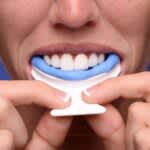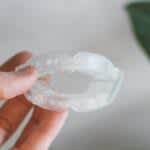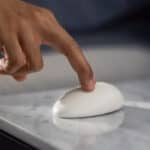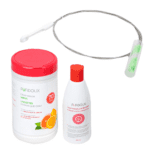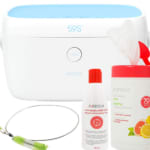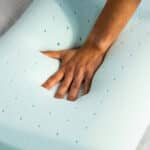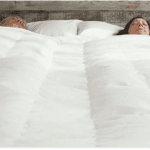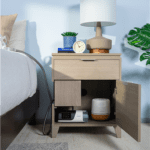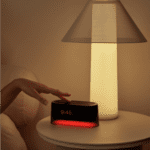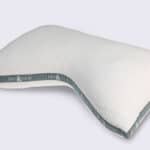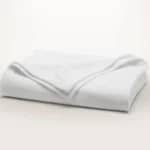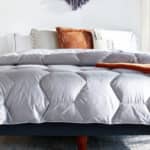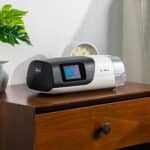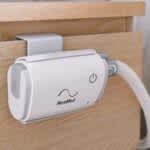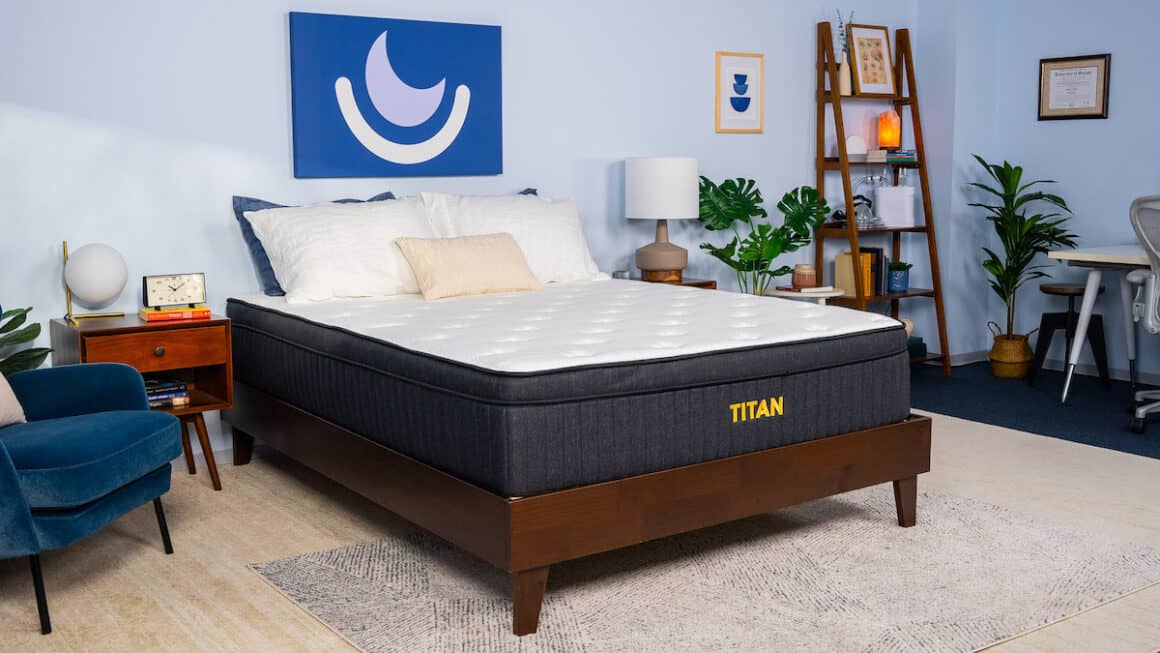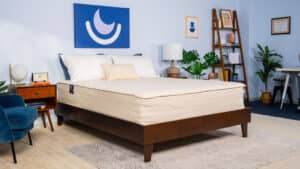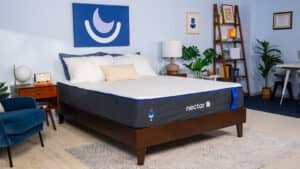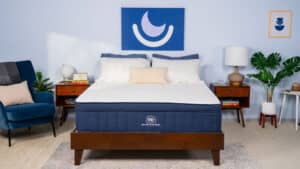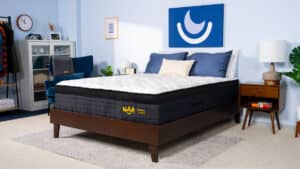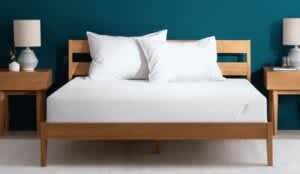Most people spend roughly one-third of their lives in bed, and finding a mattress that provides both comfort and support can make a big difference in your sleep quality and help ensure you wake up feeling refreshed and pain-free each morning.
Picking the right mattress can be tricky, however, especially with such a wide range of models on the market today.
In this guide, we’ll break down the important factors to take into account when choosing a new mattress so that you have the info you need to make an informed purchase decision.
Let Us Help You Find the Perfect Bed
Answer a few questions to find the right mattress for your unique needs
What Do We Mean By “Comfort?”
As you begin your research, you’ll no doubt come across a number of terms that might not be familiar to you. Many of them are important for finding a mattress that meets your needs.
Comfort relates to how a mattress feels, and feel varies by sleeper. Some people find that softer mattresses are more comfortable, while others prefer firmer models. Some people tend to sleep hot and like the airflow that a coil support system provides. Others like the feeling of sleeping in rather than on their bed and opt for all-foam models. Comfort is subjective.
Since the topmost materials of a mattress mostly affect how it feels, these components are known as comfort layers.
Support refers to how well – or poorly – a mattress withstands compression from your body weight. A mattress with strong support maintains an even surface for your body without sinking or sagging too deeply. Mattresses that lack support will typically dip around areas where most of your weight is concentrated, such as the torso and hips. The base layers of a mattress are largely responsible for how supportive a mattress feels, so these components are collectively known as the support core.
Together, comfort and support determine the firmness level of a mattress. Companies use different criteria for measuring firmness. We follow a 10-point scale, with 1 being the softest and 10 being the firmest. Most mattresses today fall between 3 and 8 on this scale. A softer mattress contours closely to the body, whereas a firmer model won’t have as much cushioning.
The goal for any shopper should be to find a mattress that provides a good balance of comfort and support for their sleep position and body type.

- Sleep Position: Side sleepers often need extra cushioning around their shoulders and hips to keep these areas aligned with their spine. For this reason, the best mattress for side sleepers is generally a softer mattress in the range of 4 to 6 on the firmness scale. Back and stomach sleepers, on the other hand, need extra support around the midsection to prevent the torso and hips from sinking too deeply into the mattress. Most of these sleepers need firmer mattresses that fall between 5 and 7.
- Body Type: The more you weigh, the deeper your body will sink into your mattress. People who weigh less than 130 pounds may prefer softer mattresses (3 to 5) that cushion the body and contour closely while still providing adequate support. Those in the range of 130 to 230 pounds need a little extra support, but also some cushioning and cradling to sleep comfortably. Medium to medium firm (5 to 6) mattresses tend to be ideal for these sleepers. People who weigh more than 230 pounds need strong support so they don’t sink too deeply and become susceptible to added pain and pressure points. These individuals are best suited to a firm mattress (6 to 8 on the firmness scale).
- Personal Preferences: These aren’t hard and fast rules — your individual preferences might vary from the body type and sleep position guidelines. Some lighter weight people prefer firm mattresses, and some heavier people find soft mattresses more comfortable. Finding your perfect mattress may require some trial and error.
Other Important Mattress Qualities
In addition to comfort, support, and firmness, qualities to consider when buying a new mattress include the following:
- Durability: The average mattress performs for seven to eight years before needing to be replaced. All materials break down over time, resulting in an uneven sleep surface with permanent impressions and indentations. If you share your bed with a partner, you may also notice a trench in the middle after years of use. Latex and high-density foam resist wear and tear better than other comfort layer materials, and some mattresses feature components that can be replaced as needed.
- Pressure Relief: People may feel sharp pressure points in the shoulders, lower back, or hips due to uneven spinal alignment. Side sleepers are particularly susceptible to pressure buildup. In order to alleviate this pressure, a mattress should cushion affected areas of the body while maintaining even support in order to promote good alignment.
- Motion Isolation: You may notice ripples of movement across the surface when your sleep partner moves in bed and vice versa. If your mattress is overly bouncy, these ripples can be disruptive to sleep. Mattresses with thick comfort layers tend to isolate motion best, as do hybrid models with pocketed coils that move independently from one another and create less motion transfer.
- Temperature Control: Many people sleep hot. The mattress you use can exacerbate this issue by absorbing and trapping heat near the surface. Breathable cover fabrics, ventilated comfort layers, and coil systems that promote airflow in a cooling mattress help you sleep comfortably. Some high-end mattresses feature active heating and cooling, which allows you to program a specific surface temperature.
- Edge Support: A mattress with strong perimeter support won’t sink too much when you sleep close to the edges or get in and out of bed. Innersprings and hybrids provide the sturdiest edge support because their coils create push-back against the compression of your weight – especially those with extra perimeter reinforcement. Foam and latex mattresses are more likely to sink excessively.
- Ease of Movement: Most people find that responsive mattresses that don’t sink too much are easiest to move across when getting in and out of bed. Overly soft mattresses – particularly those with thick foam layers – can make you feel trapped or stuck when moving across the surface.
- Odor Potential: After unboxing a new mattress, you may notice some initial odor. Mattresses with foam layers emit volatile organic compounds (VOCs) that carry a chemical smell. This is known as off-gassing, and the odor can be unpleasant for a few days. Latex does not emit VOCs, but this material is associated with a rubber-like smell.
- Noise: Innersprings and, to a lesser extent, hybrids can be somewhat noisy. Their coils may squeak or creak when you get in and out of bed or change sleep positions, and the noise may be disruptive to your sleep partner. Most all-foam and latex mattresses, on the other hand, are virtually silent.
Some of these criteria may matter to you more than others. Decide which performance factors are most important to your sleep experience and evaluate new mattresses accordingly.

Mattress Types
Every mattress model on the market today has a unique design, but the vast majority fall into one of five categories based on material construction. Each mattress type has pros and cons for shoppers to consider.
Foam
Foam mattresses are constructed with comfort layers of memory foam or adaptive polyfoam, followed by transitional and support layers composed of denser foam to stabilize the mattress.
- Pros: Foam mattresses tend to contour more closely than other mattress types, allowing them to alleviate pressure along the spine. These mattresses also excel at motion isolation and most don’t make any noise.
- Cons: Since foam mattresses contour closely, they may be difficult to move across for some people and lack strong edge support. Foam, which is associated with strong off-gassing odor, can also trap heat and sleep uncomfortably warm.
- Average Price (Queen): $800 to $1,100
Best Memory Foam Mattress
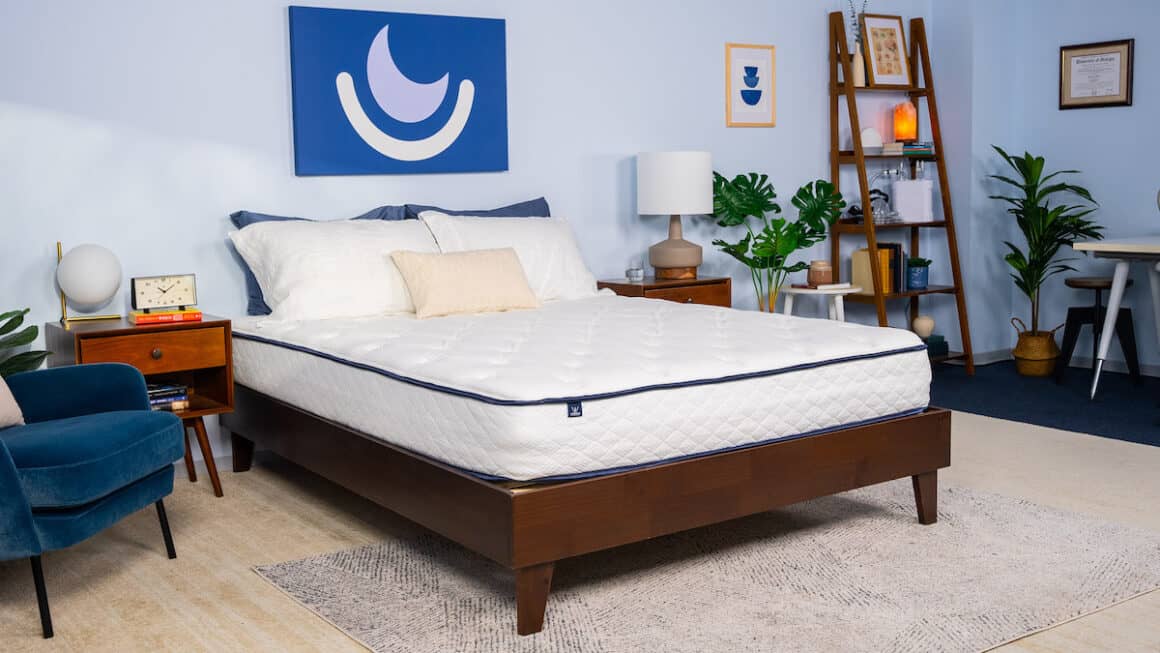
WinkBeds Gravity Lux
The WinkBeds Gravity Lux earned top honors for its balanced feel, outstanding pressure relief, and a solid support core.
Latex
Most latex mattresses contain comfort, transitional, and base layers made of latex that become progressively denser and firmer from top to bottom. Some contain layers of foam as well.
- Pros: Latex is considered by many to be a more comfortable alternative to foam. The material contours gently without sinking or hugging the body, and latex retains less body heat – especially when ventilated. Latex is naturally durable, so these mattresses tend to have longer-than-average lifespans. Couples may also find the bounciness of latex conducive for sex.
- Cons: All-latex mattresses may not feel sturdy along the perimeter, and softer models can be difficult to move across for some people. This is also one of the most expensive mattress types on average.
- Average Price (Queen): $1,600 to $2,200
A quintessential latex hybrid, the EcoCloud is responsive, supportive, and highly durable.
Best Latex Mattress

WinkBeds EcoCloud
A quintessential latex hybrid, the EcoCloud is responsive, supportive, and highly durable.
Innerspring
Traditional innerspring mattresses are constructed with thin foam or fiber padding comfort layers. Their support cores contain coils that are joined together with glue or metal fasteners, allowing the surface to feel very responsive.
- Pros: Innersprings generally feel quite supportive, especially along the perimeter, and their bouncy surfaces help facilitate movement without too much sinkage. The open coil systems promote airflow to help the surface stay cool. Innersprings are also the most affordable mattress type on average.
- Cons: The thin comfort layers provide minimal pressure relief, and most innersprings are too responsive to isolate much movement. Their durability is below-average, with many owners reporting indentations and trenching after as little as three to four years of use.
- Average Price (Queen): $700 to $1,100
Best Innerspring Mattress

Brooklyn Bedding Signature Hybrid
The Brooklyn Bedding Signature Hybrid demonstrated solid all-around performance, a choice of three firmness options, and an affordable price-point.
Hybrid
The hybrid is a type of innerspring defined by thick comfort layers of foam or latex and a support core of individually pocketed coils. Hybrid mattresses have become increasingly popular in recent years as a more comfortable alternative to traditional innersprings.
- Pros: The advantages of any hybrid depend on its material construction. Foam hybrids are a good choice for people who need cushioning and pressure relief without sacrificing sturdy support. Latex hybrids tend to be very responsive and breathable.
- Cons: Drawbacks of hybrid models also depend on their materials. Foam hybrids tend to sleep hot and feel less stable along the perimeter than other hybrids or traditional innersprings. Latex hybrids may be too bouncy to reduce motion transfer. Hybrids are also one of the most expensive mattress types on average.
- Average Price (Queen): $1,500 to $2,100
A quintessential latex hybrid, the EcoCloud is responsive, supportive, and highly durable.
Most Comfortable Hybrid Mattress

Bear Elite Hybrid
The Bear Elite Hybrid is luxuriously thick with a plush memory foam surface and sturdy coil system to generate plenty of support and is also zoned to give you extra support in areas that need it.
Airbed
Airbeds feature chambers of vulcanized rubber in their support cores. Using remote or app-based controls, owners can change the firmness of their mattress by increasing or decreasing the air level in these chambers. Traditional airbeds have little to no surface padding, but some newer models feature foam and latex comfort layers.
- Pros: Adjustable firmness levels make airbeds suitable for people whose comfort and support preferences vary night to night. Many feature dual-firmness settings that allow you and your partner to set your respective sides of the bed to different levels. Many airbeds also have modular designs that allow owners to replace the air chambers and comfort layers, which gives the mattresses longer-than-average lifespans.
- Cons: Cost is the biggest disadvantage of airbeds. These are the most expensive mattresses on average by a considerable margin. Some also produce disruptive noise when air is added or released, and electrical malfunctions are a common issue for owners.
- Average Price (Queen): $2,400 to $3,000
A quintessential latex hybrid, the EcoCloud is responsive, supportive, and highly durable.
Best Airbed Mattress

Saatva Solaire
The Saatva Solaire is a high-end airbed with a complex design, many luxury touches, and an impressive array of firmness levels.
Mattress Sizes
Most mattresses are available in six standard sizes.
- Twin (38″ x 75″): The twin is the smallest size, making it best suited to single sleepers. This is also a common size for children’s mattresses.
- Twin XL (38″ x 80″): The twin XL is a good option for tall single sleepers who need extra length.
- Full (54″ x 75″): The full is best suited to single sleepers who want more width compared to a twin or twin XL. Some couples also use full size mattresses, but many find them too cramped for two people.
- Queen (60″ x 80″): The queen is equally suited to single sleepers and couples. They are wide enough for two people to sleep comfortably, but also ideal for people who want ample space when sleeping alone.
- King (76″ x 80″): Kings are the largest mattresses in terms of total surface area. They are intended for two people and can also accommodate small children or pets.
- California King (72″ x 84″): California kings are the lengthiest standard size. Couples who need more length and less width than a standard king should consider this size.
If you and your partner share an adjustable bed, then you may feel most comfortable on a split queen, king, or California king. These models are divided down the middle, allowing each side of the bed to move independently.
Buying a Mattress Online vs. Visiting a Mattress Store
Buying a mattress online is super convenient, but buying at a mattress store has its advantages. You can personally test out mattresses by lying down on them and speak to experienced customer service staff if you have questions.
However, many have found buying a mattress online is cheaper and easier. Online mattress brands face lower overhead costs, allowing them to charge less for mattresses and other sleep products. Delivery is typically free within the contiguous U.S., and your order will come with a sleep trial that enables you to test out the mattress for a few months before deciding whether to keep it or return it for a refund. If you’re still skeptical of ordering a mattress sight unseen, start with the best-selling mattresses that are prove customer favorites.
In addition to where you buy a new mattress, when you buy the mattress is also important. Most online and brick-and-mortar mattress sellers offer large discounts during sales that typically coincide with federal holidays such as Presidents’ Day, Memorial Day, July Fourth, and Labor Day. Sales may also occur around popular shopping holidays like Black Friday and Cyber Monday.
Shipping, Sleep Trials, and Warranties
Lastly, we’ll look at three important elements of buying your new mattress: shipping options, sleep trials, and warranty coverage.
- Shipping: Standard ground shipping is usually free when you order a mattress online. The mattress is compressed in a box and delivered directly to your doorstep. Many brands offer White Glove delivery. For this option, couriers fully assemble the mattress inside your residence and remove your old mattress upon request. White Glove services typically start at $100, but some brands provide this option free of charge.
- Sleep Trials: Most online mattress brands include sleep trials with each order that run at least 90 consecutive nights, with some lasting up to a year. If you decide the mattress isn’t right for you during the trial period, you can return it for a full or partial refund. Some brands require you to break in the mattress for at least 30 nights before returning it.
- Warranties: The vast majority of mattresses sold today come with warranties of 10 years or longer. Warranties are promises from manufacturers that their mattresses aren’t defective. If a defect is present, the company will repair or replace the mattress at little to no cost for the owner. Common defects covered under warranty include excessive sagging, broken coils, and faulty cover zippers. Mattress manufacturers won’t cover other issues such as normal wear and tear or physical damage that occurs after the delivery date.



